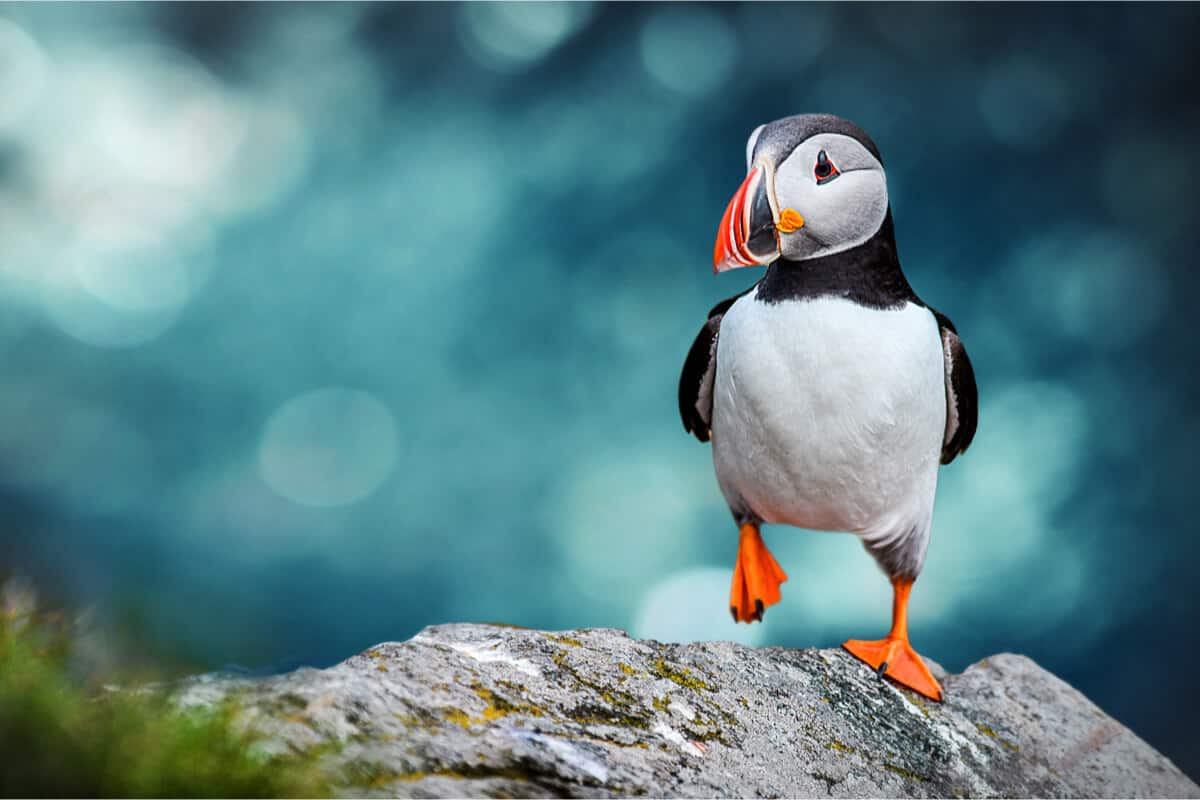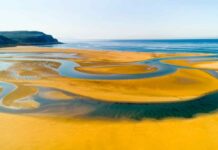Iceland is aptly called the Land of Fire and Ice because of contrasting terrain and breathtaking displays of elemental marvels. You can see active volcanoes, blue ice caves, natural hot springs, cascading waterfalls, and imposing icy glaciers. But what kind of animals can survive the harsh climate and when did they migrate to Iceland? Iceland is teeming with wildlife that have adapted to the ever-changing weather conditions. The bountiful wildlife and animals in Iceland have also attracted tourists from all over the world. The first mammal in Iceland to arrive was the snow-white Arctic Fox.

Wildlife and Animals in Iceland
After centuries, wildlife in Iceland has exploded to feature a robust population of birds, many species of fish, and whales. For example, there are 330 species of bird that visit Iceland throughout high season and 330 species of fish. The most popular and abundant fish is the Atlantic codfish found in the North Atlantic Ocean. Domestic animals are also plentiful and help Icelanders function in their daily life. You can even expect to run across the occasional Icelandic sheep crossing the road so be careful when driving. Now let’s learn more about the surprisingly sturdy animals that thrive in Iceland.
Iceland National Animal
Most people assume the colorful Atlantic Puffin is the national animal of Iceland because it’s so popular. However, the Iceland national animal is, in fact, the striking Gyrfalcon. This magnificent bird is a top predator of the sky and naturally symbolizes freedom, sheer power, and grace. The Gyrfalcon is the largest falcon in the species and has an imposing wingspan. The male wingspan is 48 to 61cm (18.9-24in) and the female wingspan is usually 51 to 65cm (20-25.5in).
Gyrfalcons are lethal and revered for their precision hunting skills. They can capture their prey mid-flight, on the ground, and even on the surface of water. Gyrfalcons sharply dive down and eat birds such as seabirds and waterfowl. As well, Gyrfalcons consume small land animals like ground squirrels and rabbit.
The colors of Gyrfalcons are different per region and the shades vary from gradients of white, black, grey, and silver. You can easily see the powerful Gyrfalcon in the Highlands of Iceland and other places like Asia, Europe, and Greenland. Gyrfalcons can withstand the cold weather conditions of the Highlands and prefers to nest inside of cliff faces. They do not produce many eggs per season ranging from 3 to 5.
The habitats for the Gyrfalcons are just as rugged as them. They include barren lands, the harshness of the Highland Mountains, WestFjords, offshore islands, and rocky seacoasts. There is also a picturesque nesting location in the Jökulsárgljúfur canyon found in Vatnajökull National Park. This canyon has the famous Dettifoss waterfall, known for having the most powerful water pressure in Europe. The trek through Jökulsárgljúfur canyon is worth the journey to see the grand Gyrfalcon and the strong Dettifoss waterfall.
What Animals Are Native to Iceland?
Iceland is not for the faint of heart but for the intrepid adventurer. Naturally the animals that inhabit Iceland must be strong. So the question remains, what animals are Native to Iceland? The fearless Arctic fox is the only animal native to Iceland. They boldly trotted over the frozen sea at the end of the Ice Age from Greenland.
The Arctic fox has adapted to Iceland completely because it does not hibernate in the winter. Their coats also change colors with each season. For example, in the winter they are snow-white but in the fall their coat darkens to deep grey. They mate for life and their mating season is April through July. A litter is usually between 5 to 12 whelps and they are raised in underground dens. You can find the Artic Fox in places with a high quantity of birds such as the Westfjords. It provides easy access to fresh eggs and meat. But they are designed to survive and will feed on berries if necessary.
The Arctic Fox Centre is a research institute that promotes the environmental preservation for the first native animal of Iceland. They also run tours to help you safely spot them for photos or film. They organize trips to Hornstrandir Nature Reserve because it’s difficult to find the Arctic fox on your own. It would be a memorable experience to see this resilient animal in person.
Domestic Animals in Iceland
Unlike the Arctic fox, the domesticated animals were brought over from other countries with the original settlers. The Icelandic horse is purebred and has not mixed with other breeds because of isolation. But they have naturally evolved into several strains. The two most popular strains are Svaðastaðir and Hornafjörður. Svaðastaðir is more elegant while the Hornafjörður is valued for its strength and bravery.
Icelandic sheepdogs were also brought over with the original settlers. They have an essential role in daily life because they herd and locate lost sheep. Their temperament is perfect for the role. They are friendly, alert, and strong. Other animals in Iceland include goats, chickens, and cattle.
Are There Dangerous Animals in Iceland?
Are there dangerous animals in Iceland? Will you be attacked by giant polar bears? Rest easy, Iceland will only have the very rare polar bear come from Greenland and there are no violent animals like wolves.
But please keep a respectful distance from the savvy Arctic fox because it’s designed to survive and will attack if threatened. Also, there are real Reindeers located in East Iceland that can attack you with their antlers if you’re too close. Overall, practice sustainable tourism by maintaining a safe distance to protect yourself as well as all wildlife.
Popular Animals in Iceland
Over a millennium, the animals in Iceland have diversified to include birds and marine life. Bird enthusiasts travel from all over the world to spot the much-loved Atlantic Puffins in the Westman Islands. You should also visit the lovely Lake Mývatn because it is a bird watcher’s dream. You can easily see exotic birds like the Long Tailed Duck and Golden Plover.
Whale watching has also increased in popularity over time. You can travel to North Iceland and visit Husavik, which is known by many as the whale watching capital in Iceland. The best time to go is from April through November. You have a 99 percent chance of seeing marine life. These include friendly Grey Seals, the Joyful White Beaked Dolphin, and the orca whale or previously called killer whales.
The wildlife in Iceland commands a global audience, so go ahead and book your trip to Iceland now. Come see the awe-inspiring landscapes and the majestic Gyrfalcon take flight.


































